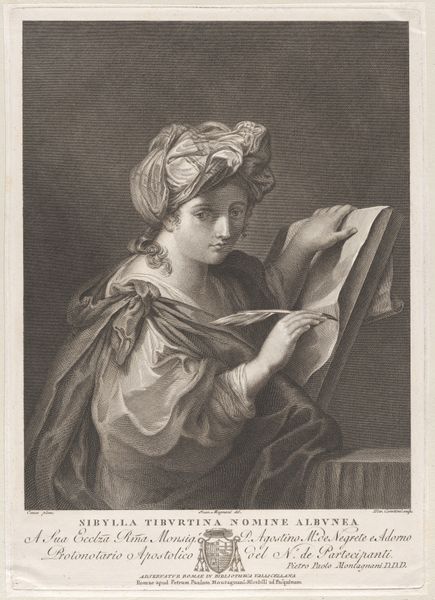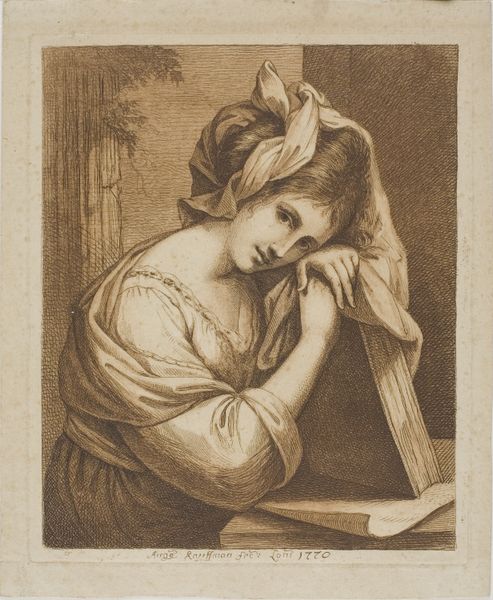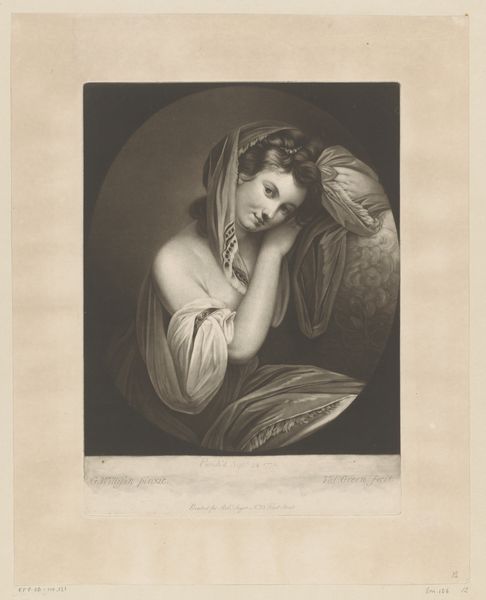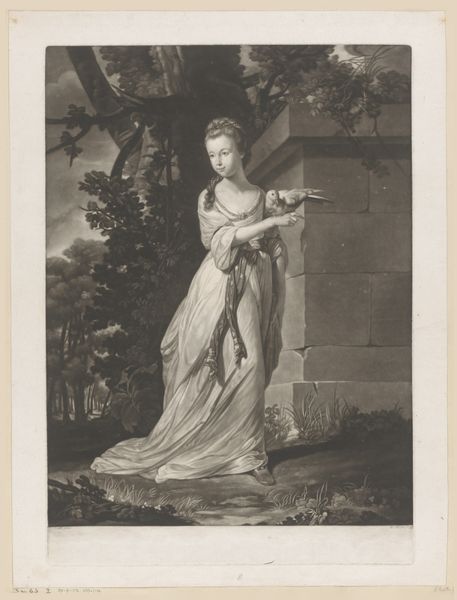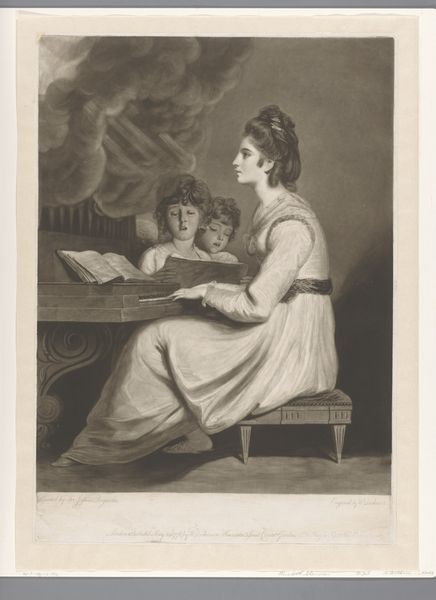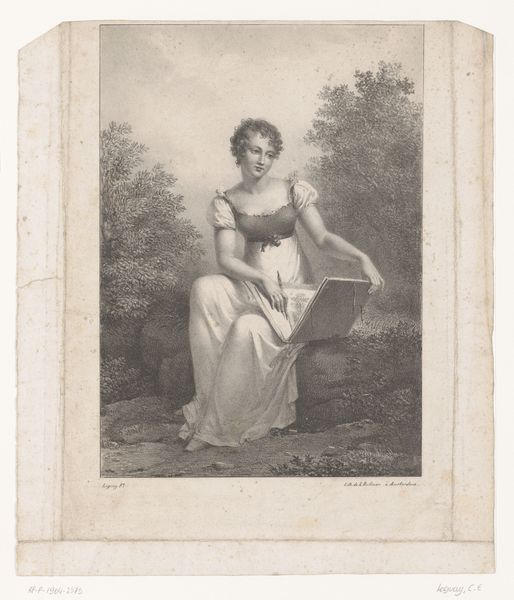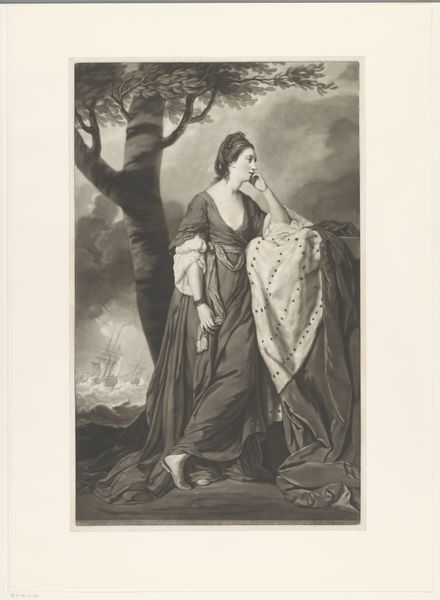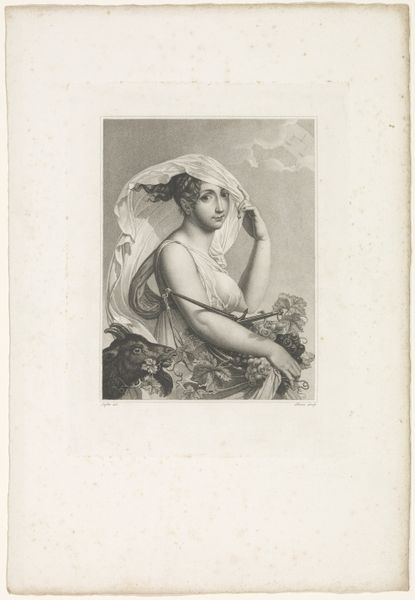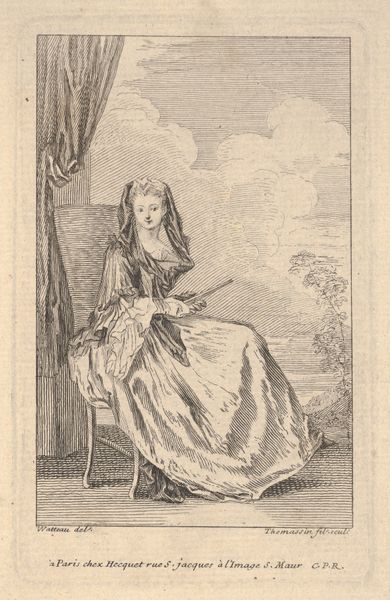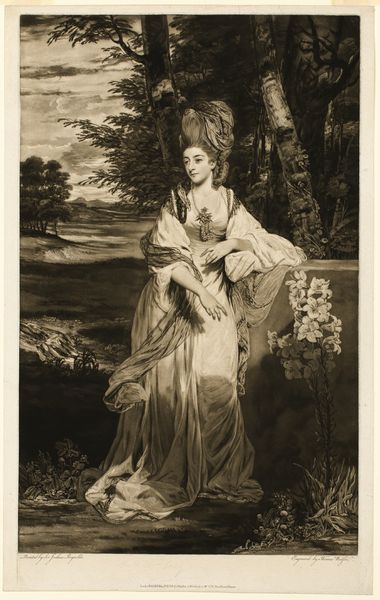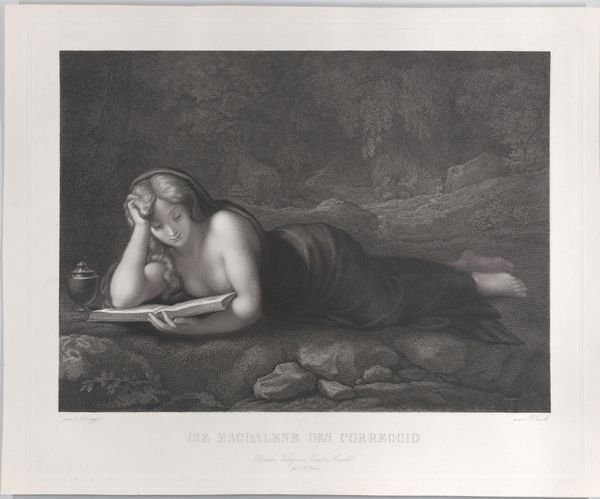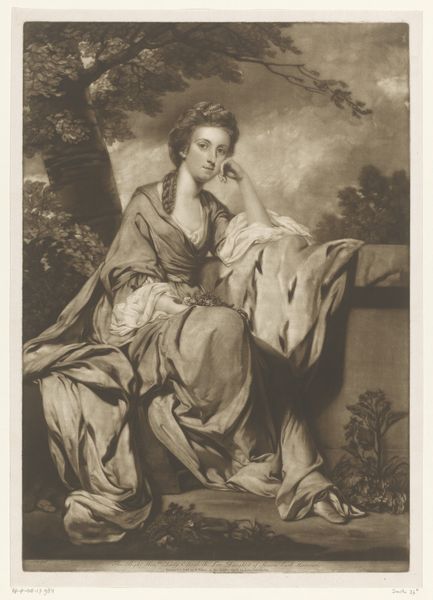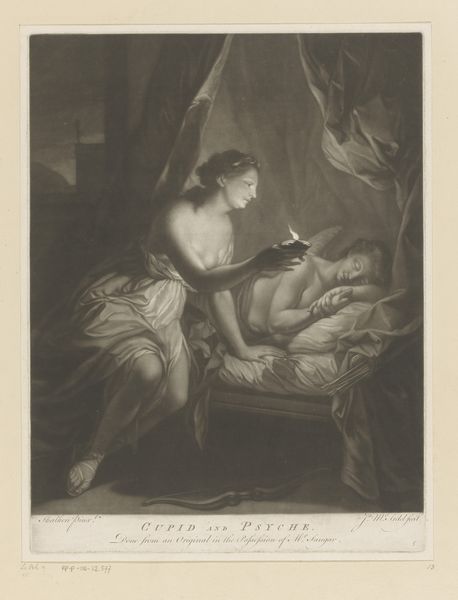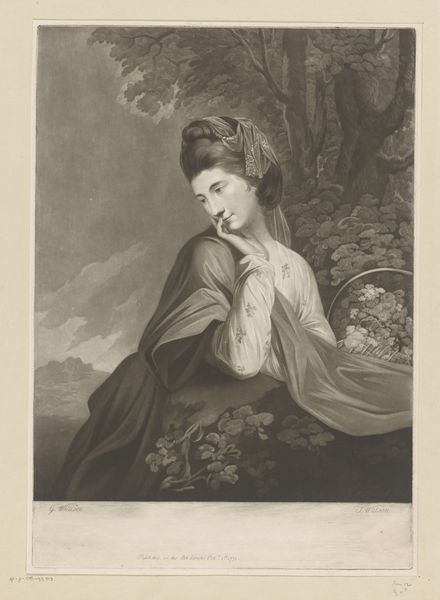
Dimensions: height 502 mm, width 350 mm
Copyright: Rijks Museum: Open Domain
Curator: Welcome. Here we have a rather charming engraving from 1770, "Portret van mevrouw Lumsdon" by Thomas Watson, housed right here at the Rijksmuseum. Editor: The mood is so... contemplative. Almost sepia-toned even though it isn’t, if that makes sense? A gentle breeze ruffling the imaginary pages of her score… Makes you wonder what’s she reading? Is it Mozart? Maybe a torrid sonnet disguised as a minuet? Curator: Very likely music, yes! Given the time, it would have been created using meticulous techniques. Consider the mezzotint process employed to achieve the tonal gradations. The copperplate would've been roughened with a rocker, then smoothed in areas to control how much ink the plate held. It speaks to an era where printmaking democratized portraiture for a growing middle class. Editor: It feels like I am intruding on a private moment, in that space between daydream and rehearsal. She’s absolutely lost in that music, yet present. It makes you feel like you could practically hum along, you know? A little shyly, perhaps. I really like the contrast with the background that hints at some sort of garden – but only barely. Curator: Indeed. The background contributes to this effect of contained domesticity but also alludes to her refinement and connection to nature, both carefully coded within these conventions. The fabric itself, cascading folds and precise rendering, indicate significant material wealth. The whole composition operates as a carefully arranged sign system. Editor: I am captivated by the almost casual nature of her pose though! It is so studied yet feels accidental, which probably means nothing was accidental at all, right? So much intention in appearing effortless! You can practically hear the rustle of the silk and almost catch the faint fragrance from the garden on the breeze… Curator: Exactly, it demonstrates a real understanding of status, labour and materials by the artist and commissioners during this time. Everything has been precisely executed to portray that feeling, even if, to the contemporary eye, it might be overlooked in favour of aesthetic appreciation alone. Editor: I feel as though I now have an added appreciation for both Thomas Watson's technical ability, and a deeper appreciation of this composition – it seems the artist was able to balance not only the sitter’s refinement, but also convey her connection to culture. Curator: Indeed! Let’s move on to our next exhibit.
Comments
No comments
Be the first to comment and join the conversation on the ultimate creative platform.
